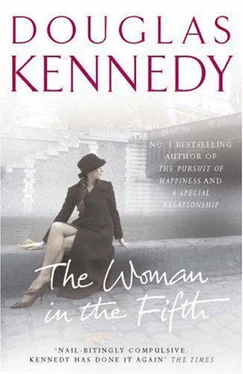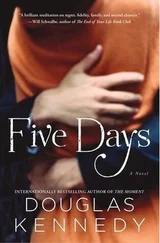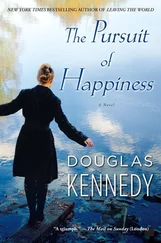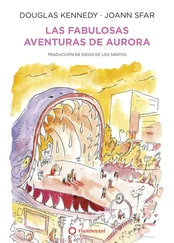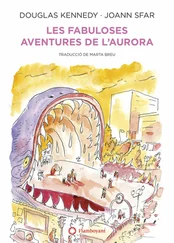‘That would be nice.’
He motioned to the cop who disappeared into the corridor. Then he returned to studying the file, deliberately ignoring me for the moment. The cop returned with a small white plastic cup and handed it to me. It was hot to the touch, but I still downed it in one go.
‘Thank you,’ I said to both the cop and the inspector. Coutard put down his file. He now faced me square on.
‘Inspector Leclerc informed me that you said you spent last evening at the apartment of a woman friend … a Madame Margit Kadar, resident of 13 rue Linne, Fifth arrondissement . Is that correct?’
‘Yes, sir.’
‘Naturally, we investigated this. We sent several of our men to Madame Kadar’s apartment. And I regret to inform you that we discovered that Madame Kadar is dead.’
The news was like a mule kick to the stomach.
‘That can’t be true,’ I finally said.
‘It is, I am afraid, completely true,’ he said.
I put my head in my hands. Not Margit. Please , not Margit.
‘What happened?’
‘Madame Kadar killed herself.’
‘What?’ I whispered.
‘Madame Kadar took her own life.’
‘But I saw her yesterday. When did this happen?’
Coutard stared right at me. And said, ‘Madame Kadar killed herself in 1980.’
‘WHAT DID YOU just say?’ I asked.
‘Madame Kadar killed herself in 1980,’ Coutard said.
‘Very funny.’
‘It is not at all funny. Suicide never is.’
‘You expect me to believe—?’
‘ Monsieur, the question should be rephrased: “You expect me to believe that you spent yesterday evening at the apartment of a woman who has been dead for twenty-six years?”’
‘What proof do you have that she died in 1980?’
‘I ask the questions here, monsieur . You tell me you were at her apartment last night.’
‘Yes,’ I said, deciding fast that, under the circumstances, it was better to maintain the lie than to backpedal.
‘How long have you been involved with Madame Kadar?’
‘Several months.’
‘You met her where?’
I explained about Lorraine L’Herbert’s salon. Coutard noted this on a pad and asked for her address.
‘And you’ve regularly seen Madame Kadar since that first meeting?’
‘Twice a week.’
‘And you were “intimate” with her?’
‘Absolutely.’
‘You are being serious here?’
‘I am completely serious.’
He looked at me and shook his head. Slowly.
‘Have you suffered hallucinations like this in the past?’
‘Inspector, I am telling you the truth.’
‘Have you ever been hospitalized — committed — for psychotic disorders? I can — will — run a complete check on your medical history and—’
‘I am not delusional, Inspector.’
‘And yet you insist that you’ve been having an affair with a dead woman. That certainly exceeds the definition of “delusional”.’
‘Show me some proof that she is dead.’
‘In time,’ he said quietly. ‘Describe Madame Kadar to me.’
‘Late fifties. Striking face, sharply etched features, not much in the way of age lines, a shock of black hair—’
‘Stop. Madame Kadar was thirty when she died in 1980. So the woman you were allegedly seeing was over twenty-five years older.’
But if she was thirty in 1980, wouldn’t she be in her late fifties now?
‘Do you have a photograph of her in 1980?’ I asked.
‘In time,’ he said again. ‘Anything else you wish to tell me about her physical appearance?’
‘She was — is — beautiful.’
‘Nothing else? No distinguishing marks or characteristics?’
‘She had a scar across her neck.’
‘Did she tell you how she received such a scar?’
‘She tried to cut her own throat.’
Coutard seemed thrown by my answer, but was simultaneously trying to mask his bemusement.
‘ Tried to cut her own throat?’ he asked.
‘That’s right.’
‘The suicide was not successful?’
‘Well, evidently not , if she was telling me about it.’
He reached for a file in front of him. He opened it. He turned several pages, then looked up at me again.
‘Did she explain why she tried to kill herself?’
‘Her husband and daughter were killed in a hit-and-run accident.’
Coutard stared down at the file again. His eyes narrowed.
‘Where exactly did this accident take place?’
‘Near the Luxembourg Gardens.’
‘When exactly?’
‘1980.’
‘What month?’
‘June, I think.’
‘And what were the circumstances of the accident?’
‘Her husband and daughter were crossing the road—’
‘The husband’s name?’
‘Zoltan.’
‘The daughter?’
‘Judit.’
‘How do you know this?’
‘She told me.’
‘Madame Kadar?’
‘Yes, Madame Kadar told me. Just as she told me the driver of the car—’
‘What was the make of the car?’
‘I forget. Something big and flashy. The guy was a businessman.’
‘Why do you know all this?’
‘Because Margit was my lover. And lovers tell each other their pasts.’
‘Did your “lover” tell you what happened to the driver of the black Jaguar—’
‘That’s right — she said it was a Jag … and the man lived in Saint-Germain-en-Laye.’
Again he glanced down at the file, then looked up at me. His cool was cracking. He now seemed angry.
‘This game is no longer amusing. You have obviously engaged in some sort of warped research about a dead woman who murdered the man who ran over her husband and daughter and then—’
‘Murdered?’
‘That’s what I said. Murdered .’
‘But she told me he was killed by a burglar.’
‘How was he killed?’
‘Knife wound, I think.’
‘When?’
‘Around three months after the accident.’
‘You’re right. Henri Dupre—’
‘That’s the name she mentioned. A pharmaceuticals executive, right … ?’
‘Correct. And Monsieur Dupre — a resident, as you said, of Saint-Germain-en-Laye — was murdered at his home on the night of September 20, 1980. His wife and children were not at home at the time. In fact, his wife had just filed for divorce. The man was a hopeless alcoholic and the hit-and-run accident which killed Madame Kadar’s husband and daughter also ended Dupre’s marriage. However, Dupre was not killed by a burglar. He was killed by Madame Kadar.’
‘Bullshit.’
He reached into the file and pulled out a faded Xerox copy of a newspaper article. It was from Le Figaro and dated September 23, 1980. The headline read:
EXECUTIVE MURDERED
AT HOME IN SAINT-GERMAIN-EN-LAYE
BEREAVED WOMAN SUSPECTED
This story outlined the facts of the murder — how Dupre had been surprised in his bed in the middle of a Saturday night; how the attack had been very frenzied; how the murderer had used a shower in the house, then left a note in the kitchen: For Judit and Zoltan. A neighbor who had been up early saw a woman leaving the house around 5 a.m. and heading to the metro — and the police now wanted to question Margit Kadar, whose husband and daughter had been killed by Dupre in a hit-and-run accident several weeks earlier.
‘This is unbelievable,’ I said.
Coutard reached into the file and pulled out an eight-by-ten photograph and pushed it across his desk. It was a police photo — black and white, but still shockingly lurid. Dupre was shown strewn across a bloodstained bed — huge black blotches surrounding him — his chest ripped open in several places; his face and head gashed horribly.
Читать дальше
